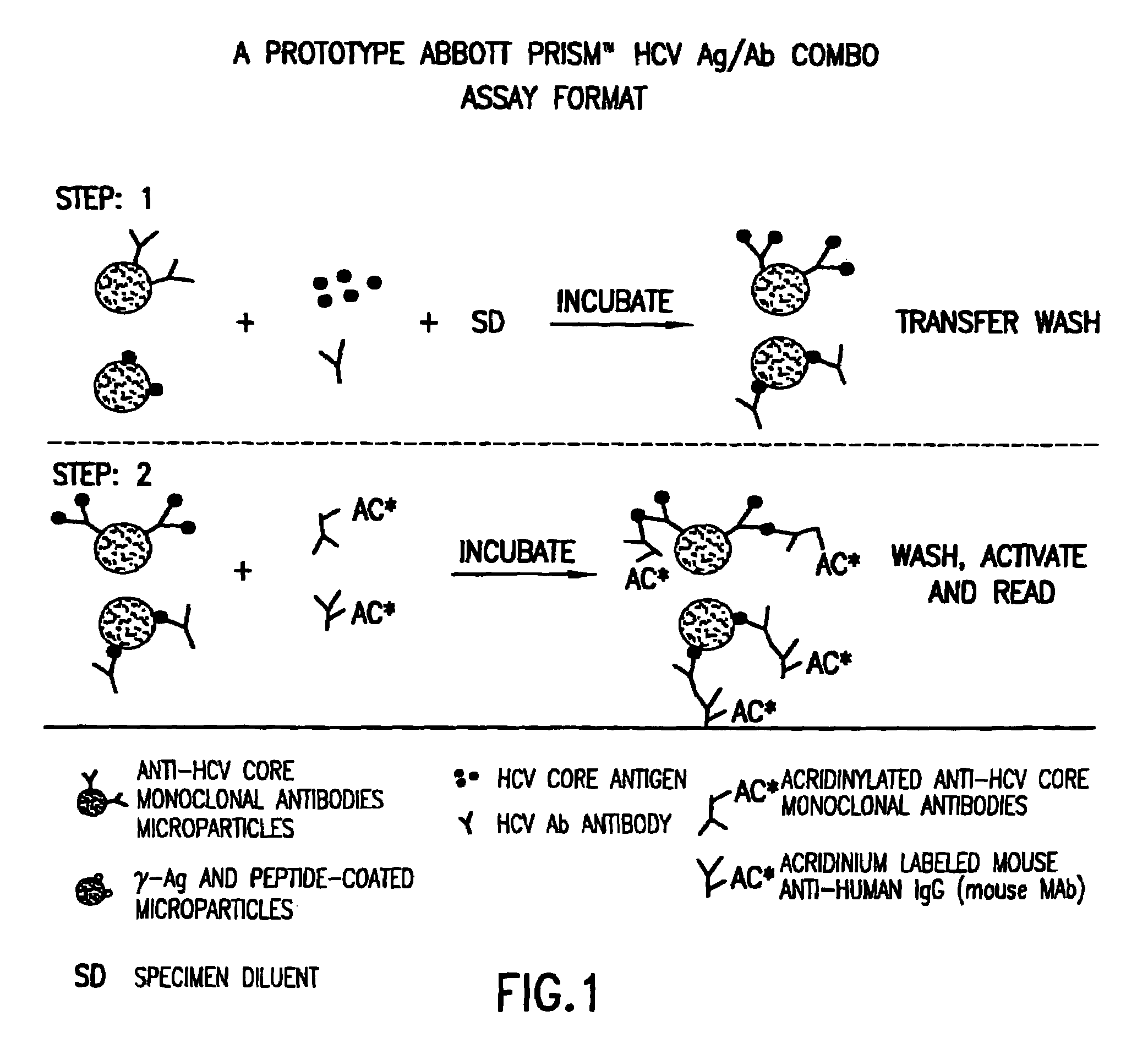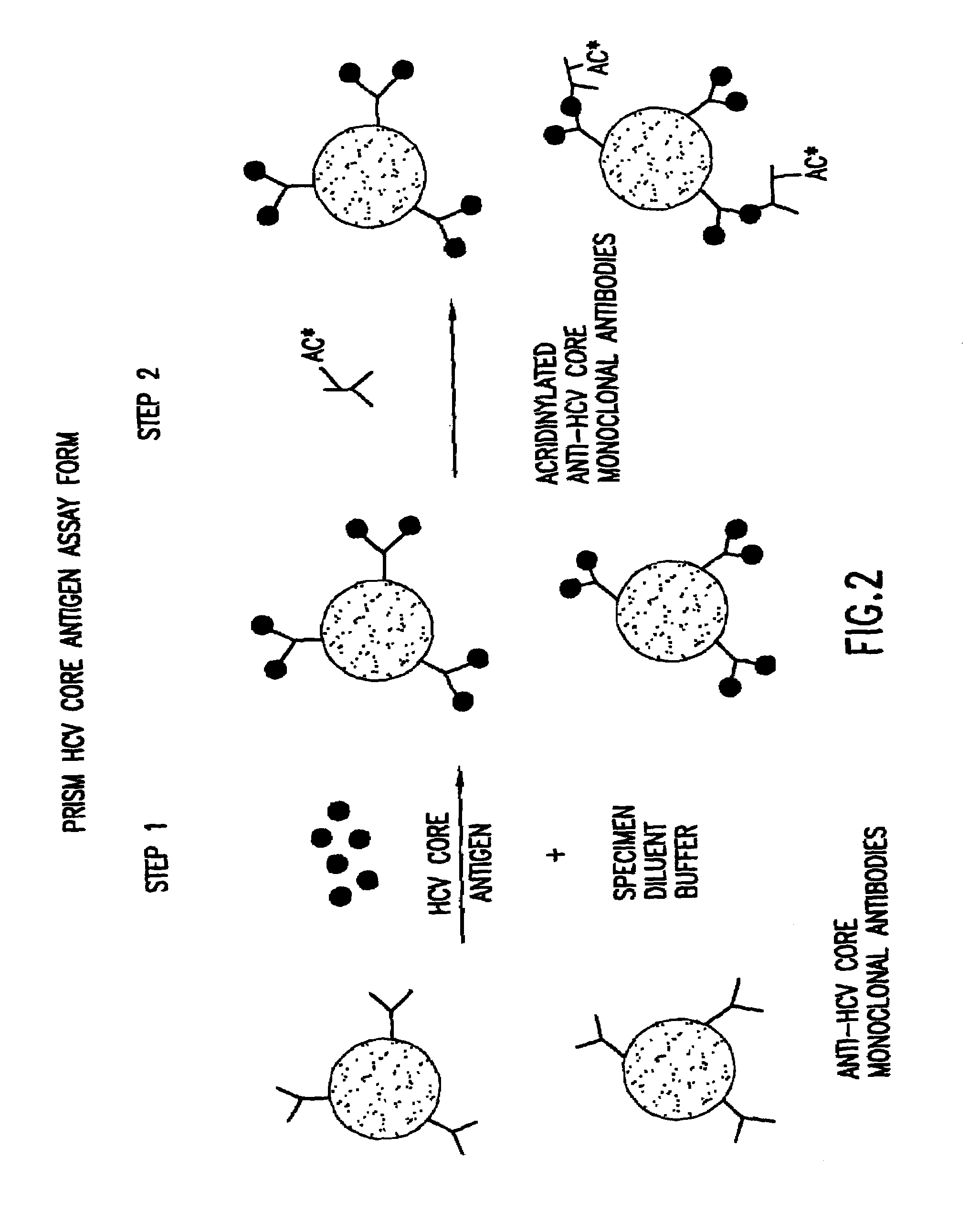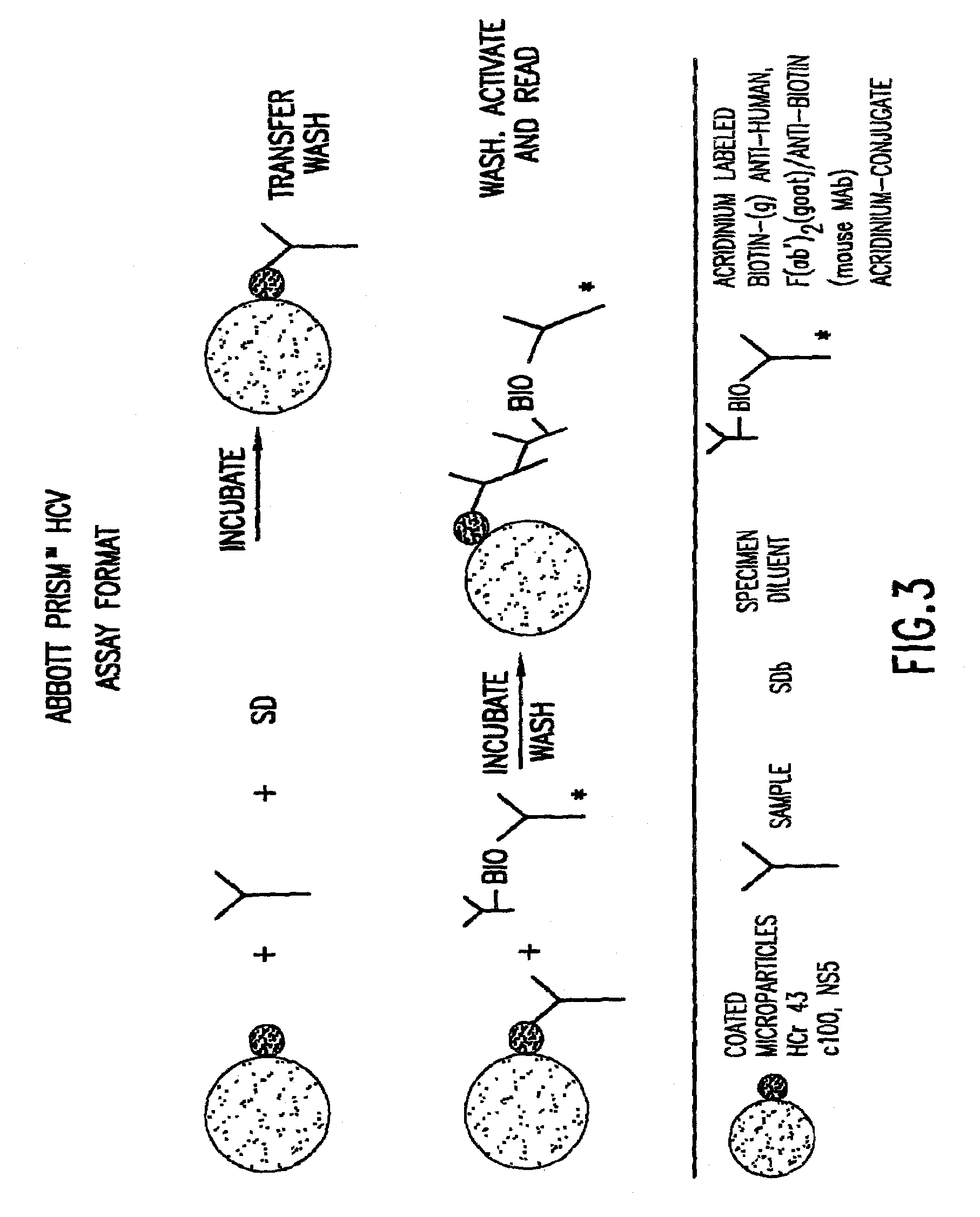Methods for the simultaneous detection of HCV antigens and HCV antibodies
- Summary
- Abstract
- Description
- Claims
- Application Information
AI Technical Summary
Benefits of technology
Problems solved by technology
Method used
Image
Examples
example i
Mapping of HCV Core Epitopes Recognized by Monoclonal Antibodies
[0043]To determine the region within the HCV core protein to which each of the monoclonal antibodies binds, a series of overlapping, biotinylated peptides were synthesized (Table I). These peptides were used to develop EIAs, as described below. It should be noted that all monoclonals were able to detect a recombinant HCV core fusion protein using EIA methodologies similar to that described below (data not shown).
[0044]
TABLE IHCV-Core Derived PeptidesCore RegionPeptideSequenceRepresentedAMSTNPKPQKKNKRNTNRR 1–18BNKRNTNRRPQDVKFPGGG11–28CDVKFPGGGQIVGGVYLLP21–38DVGGVYLLPRRGPRLGVRA31–48EGPRLGVRATRKTSERSQP41–58FKTSERSQPRGRRQPIPKA51–68GRRQPIPKARRPEGRTWAQ61–78HPEGRTWAQPGYPWPLYGN71–88IQYPWPLYGNEGCGWAGWLL81–98JCGWAGWLLSPRGSRPSW 91–1071WLLSPRGSRPSWGPTDPRRRSRNLG 96–1202SWGPTDPRRRSRNLGKVIDTLTCGF106–1303SRNLGKVIDTLTCGFADLMGYIPLV116–1404LTCGFADLMGYIPLVGAPLGGAARA126–1505YIPLVGAPLGGAARALAHGVRVLED136–1606GAARALAHGVRVLEDGVNYATGNLP146–1707L...
example ii
Epitope Mapping of Monoclonal Antibodies
A. Preparation of HCV Gene Fragment Library.
[0049]A plasmid containing nucleotides 14–5294 of the H strain of HCV (N. Ogata, H. Alter, R. Miller, and R. Purcell, Proc. Natl. Acad. Sci. USA 88:3392–3396 (1991)) in pGEM-9Zf(−) (Promega Corp., Madison, Wis.) was partially digested using DNase I by the following method in order to obtain random epitope-encoding fragments. Five μg aliquots of plasmid DNA were incubated at 15° C. for 10 minutes in 0.5 M Tris-HCl pH 7.6, 10 mM MnCl2 in the presence of anywhere from 0.1 to 0.7 units of DNase I. Aliquots from each digestion were analyzed by agarose gel electrophoresis. The two digestion mixtures containing 0.6 and 0.7 units of DNase I were found to give the largest amount of fragments in the 50–200 bp range. These two mixtures were pooled and extracted one time with an equal volume of phenol-chloroform (1:1, v / v) then precipitated by the addition of one tenth volume 3 M sodium acetate and 2.5 volumes 1...
example iii
Construction of Recombinant Antigens for Use in an HCV Core Antibody / Antigen Combination Assay
A. Background.
[0058]The human immune response to Hepatitis C Virus (HCV) core is for the most part exclusive to the N-terminal half of the native protein. Multiple epitopes (regions comprising a defined number of amino acids, usually <10) have been identified within the first 115 amino acids of the native protein (Sallberg et al). Therefore, recombinant antigens utilized in assays for the detection of human anti-core antibodies present in the serum of infected individuals need only contain this portion of the native protein. Conversely, in vitro assays for the detection of HCV core protein utilize murine monoclonal antibodies to capture and detect native core protein also present in the serum of infected individuals. Combination assays for the simultaneous detection of both core antigen and human anti-core antibody in a single assay combine the two assay formats. In this case, a recombinant...
PUM
| Property | Measurement | Unit |
|---|---|---|
| Molar density | aaaaa | aaaaa |
| Fraction | aaaaa | aaaaa |
| Fraction | aaaaa | aaaaa |
Abstract
Description
Claims
Application Information
 Login to View More
Login to View More - R&D
- Intellectual Property
- Life Sciences
- Materials
- Tech Scout
- Unparalleled Data Quality
- Higher Quality Content
- 60% Fewer Hallucinations
Browse by: Latest US Patents, China's latest patents, Technical Efficacy Thesaurus, Application Domain, Technology Topic, Popular Technical Reports.
© 2025 PatSnap. All rights reserved.Legal|Privacy policy|Modern Slavery Act Transparency Statement|Sitemap|About US| Contact US: help@patsnap.com



